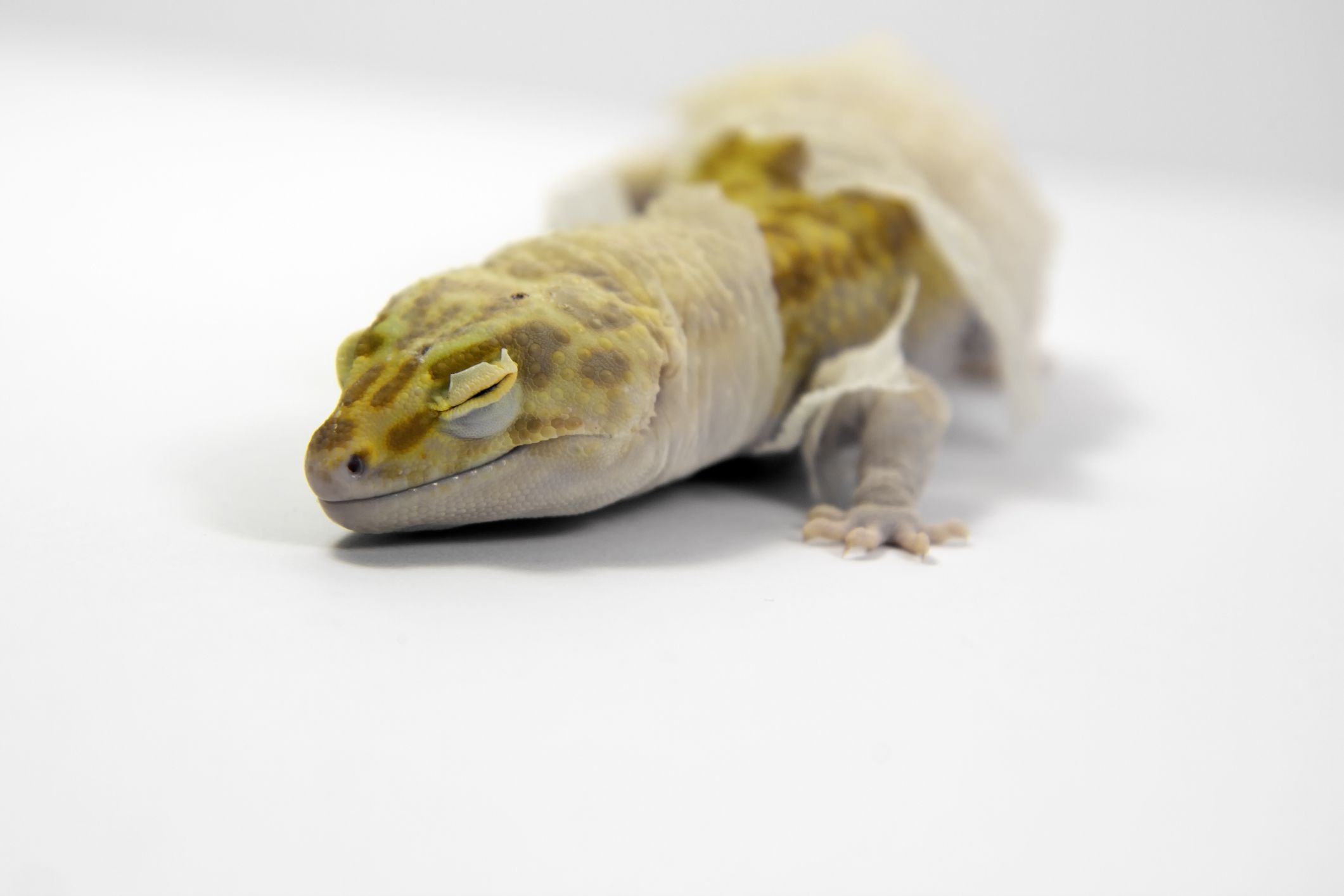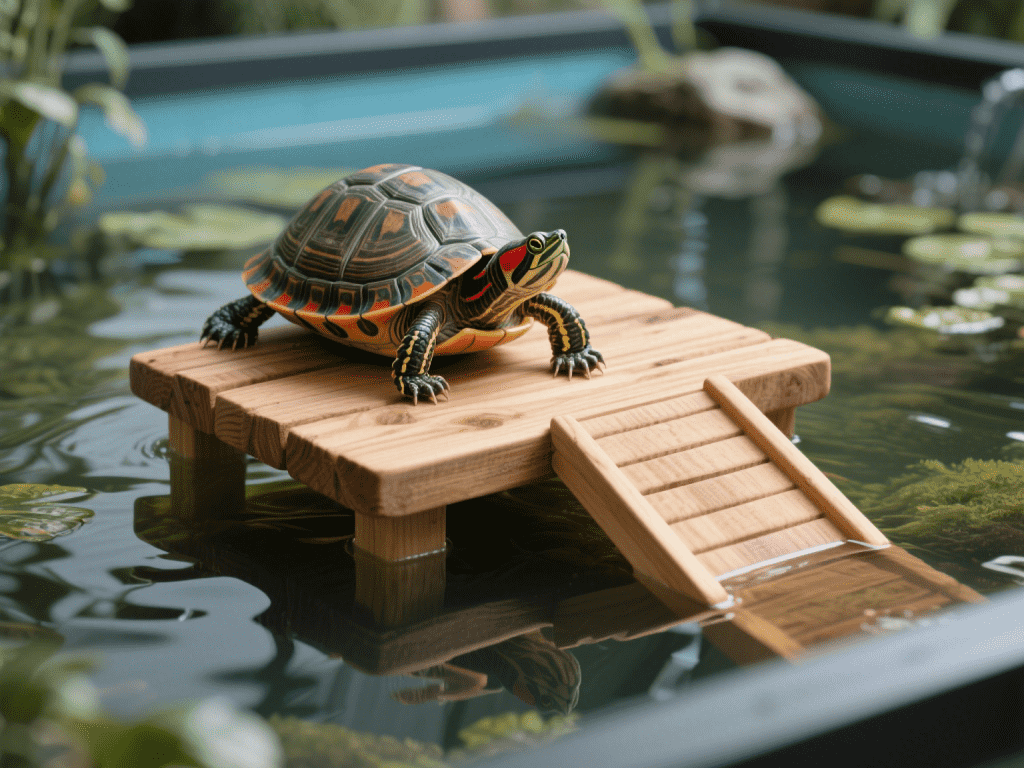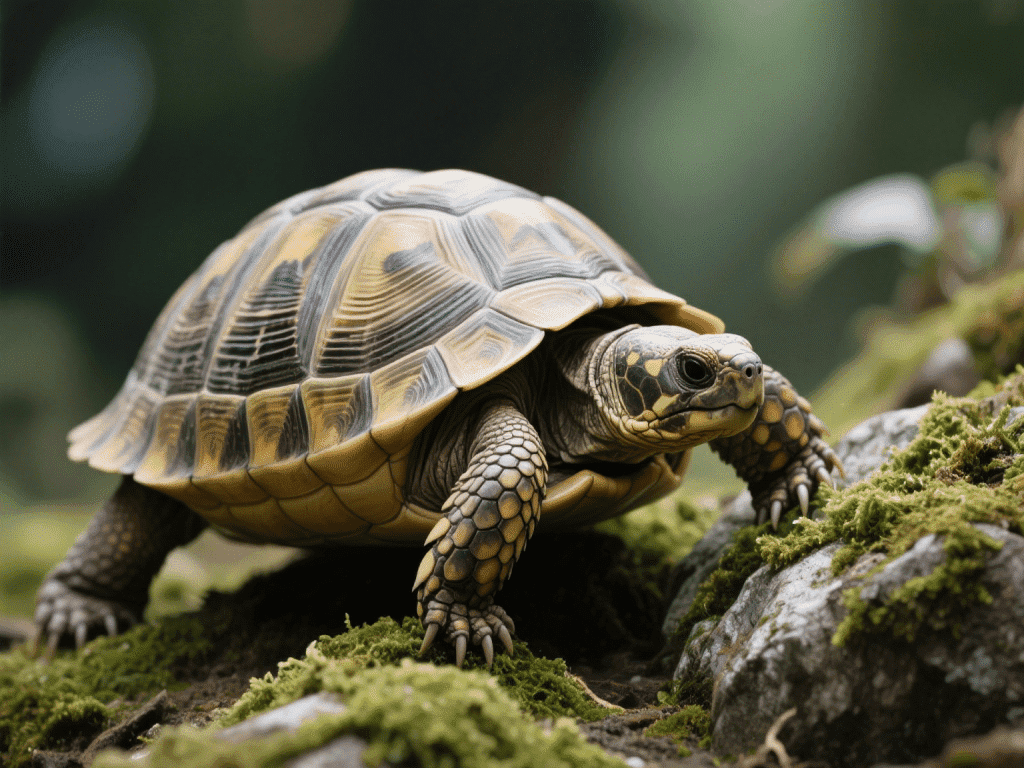Explore more:
- Small Pets
- Exotic Pets
- Exotic Pet Care
All reptiles shed, and every species has its normal shedding pattern. Dysecdysis happens is when a reptile sheds abnormally, usually leading to a skin buildup on the limbs and eyelids. If dysecdysis occurs, it may indicate a problem in your reptile's environment or an underlying health issue. For example, if an enclosure is not adequately humidified or your reptile has a skin parasite, it may develop dysecdysis and require manual skin removal. Vets can diagnose dysecdysis with a physical examination and create a treatment plan accordingly. The best way to prevent the condition is by maintaining the safest, healthiest enclosure space possible for your pet.
Dysecdysis is the abnormal shedding of a reptile's skin. While the condition can refer to any abnormality, it often manifests as the skin your reptile should shed, building up in layers. When dysecdysis occurs and a reptile sheds irregularly, health problems may arise. Knowing what's normal for your pet is essential to detect any abnormality. Dysecdysis most commonly occurs in snakes.
Dysecdysis will appear as skin buildup on your reptile's body. As soon as you notice shedding abnormalities, consult your vet.
Dysecdysis may be harder to notice in some reptiles that are naturally lighter in color, like bearded dragons or leopard geckos. After your reptile sheds, a thorough inspection can help you spot the signs of skin buildup. The skin loses its sheen during shedding, so look for dull or pale shed remnants on your reptile's body. Skin buildup most commonly occurs in the armpits, feet, tail tips, eyes, and belly but can happen anywhere on your reptile. If the dead skin collects on the feet, individual toes, or the tail, blood circulation may become restricted and cause the appendages to die and fall off. Buildup on the eyes can cause difficulty seeing and eating, leading to eye infections or blindness if untreated.

Fernando Trabanco Fotografía / Getty Images
There are several reasons why a reptile may not have a complete shed.
To diagnose dysecdysis, your vet will perform a physical examination of your reptile, examine its medical history, and ask questions concerning its husbandry. Typically, your vet will be able to diagnose dysecdysis by looking at your reptile with their naked eye and then will move on to determining the primary cause of the condition. If the explanation isn't attributable to problems with your reptile's enclosure, your vet may perform a series of tests and search for external parasites.
The best way to treat dysecdysis is to remove the skin following a softening, warm water soak. After about ten to thirty minutes of soaking, you should be able to peel off your reptile's buildup easily and gently. Be careful not to damage the healthy skin underneath the dead skin when removing the shed. You may use tweezers to help peel off small pieces of skin, and repeated application of ointment will help retained eye caps fall off. You should never remove eye cap buildup with tweezers.
Your vet may recommend a humidity chamber for your reptile to help moisten and loosen the skin. You can make a humidity chamber using a spacious aquarium tank containing wet bath towels, placed atop a heater and covered with a light cloth.
Dysecdysis itself is easy to treat and has a quick recovery time, but the primary condition causing the abnormal shedding may carry a more complex prognosis. If your reptile's dysecdysis results from poor tank conditions, ensuring that you make the necessary changes to its environment is essential to its recovery. If dysecdysis is not treated, it can damage your reptile's eyesight, and lead to bacterial and fungal infections.
The best measure you can take to prevent dysecdysis is maintaining appropriate humidity levels in your tank and ensuring your reptile has adequate surfaces to rub up against. Placing a humidity hide box in your enclosure may be helpful. Additionally, provide your reptile with a well-rounded, vet-approved diet. Preventing dysecdysis is more straightforward than treating it, so always provide your reptile with proper care.
Dysecdysis is not typical in reptiles, but it can usually be prevented by providing adequate humidity for your pet and is easily treatable with at-home removal methods.
Yes, all reptiles can develop dysecdysis, but it is most common in snakes.
You should never use tweezers to remove the skin from your reptile's eye caps, as they can severely damage the eye. Instead, apply ointment for several days and wait for the skin to fall off.

As a long‑time reptile enthusiast and turtle keeper with nine years of firsthand experience, I kno...
Read More →
Land turtles captivate owners with their ancient grace—but their shells demand specific care to av...
Read More →
Obesity affects up to 60% of domestic cats, predisposing them to diabetes, arthritis, and hepatic li...
Read More →
IntroductionAs our canine companions age, their oral health becomes increasingly vulnerable. Dental ...
Read More →
IntroductionIndoor cats often lack opportunities for exercise and can become overweight, leading to ...
Read More →
IntroductionGardens can be a delightful outdoor extension of the home, but unprotected gardens may p...
Read More →
IntroductionEmergencies can strike when least expected. Having basic first aid knowledge for your do...
Read More →
How to Build a Strong Bond with Your Pet: Tips for Connecting with Your AnimalThe profound connectio...
Read More →
How to Deal with Pet Behavioral Issues: Tips for Solving Common ProblemsPet behavioral issues are am...
Read More →
Comments on "Dysecdysis in Reptiles" :